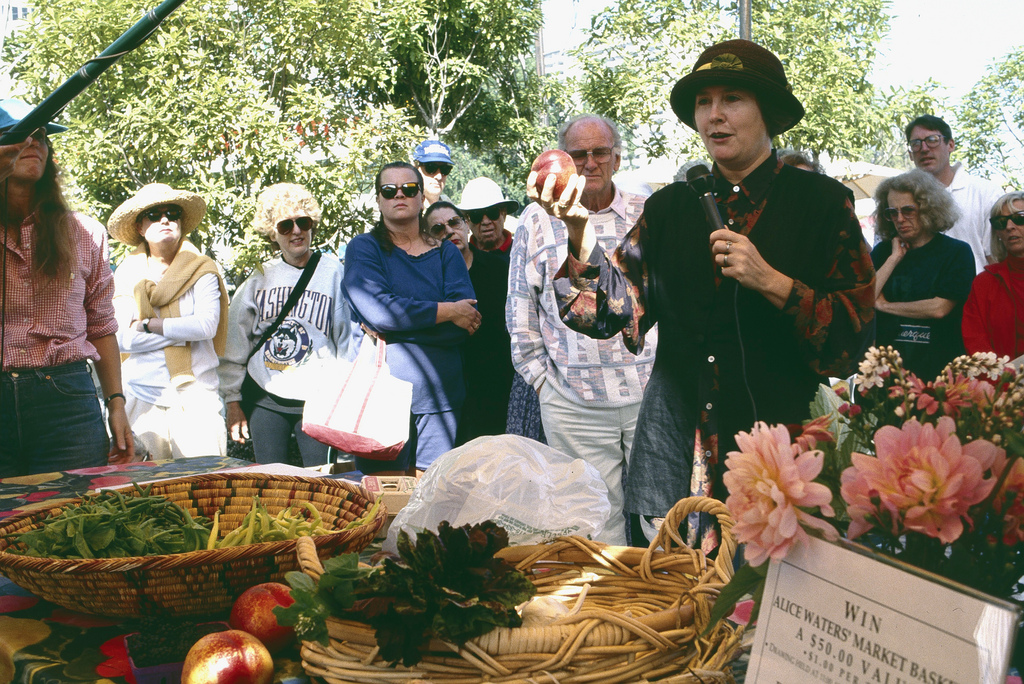
On May 18, CUESA will be celebrating the 20th Birthday Bash of the Ferry Plaza Farmers' Market, with special events throughout the Saturday morning market.
For $20 a ticket ($10 for children 10 and under), market goers can create their own seasonal fruit shortcakes at stations "curated" with market ingredients prepared by four top local pastry chefs: William Werner of Craftsman & Wolves, Francis Ang of Fifth Floor, Jen Musty of Batter Bakery, and Luis Villavelazquez of Les Elements Patisserie. There will also be coffee, tea, and a juice and mimosa bar filled with fresh-squeezed juices, fresh fruit and vegetable purees (don't miss the surprisingly refreshing fennel-frond puree), sparkling water and Champagne. The market's founders will do a presentation at 11am.
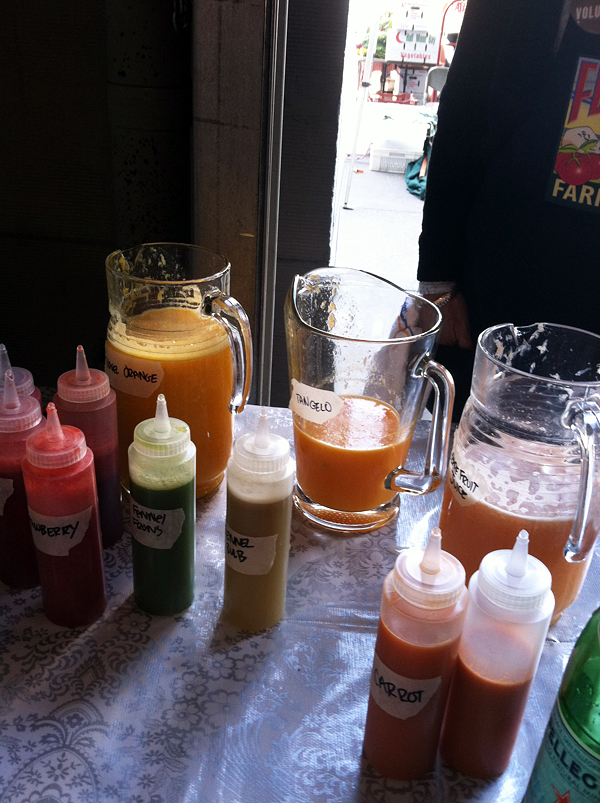
The first regular weekly markets, held in front of the Ferry Building, happened in 1993. Do you remember 1993? I do. The scars of 1989's 6.8 Loma Prieta quake still criss-crossed the city. A post-earthquake, post-financial crash, pre-tech boom recession meant jobs were scarce but rents were cheap. But change was coming, mostly notably along the waterfront. Since 1958, the Embaracadero Freeway had sliced across the northeastern edge of the city, throwing the piers from the Bay Bridge northwards into concrete-shadowed gloom. Ferries still left from the Ferry Building, but to get to them, you scuttled as fast as possible through the building's dimly lit, grubby passages, no more inviting than a New York City subway tunnel. Then, in 1991, the earthquake-damaged freeway was finally removed, and the City realized it had a civic jewel--the greatly underutilized Ferry Building, suddenly revealed in all its Market Street-anchoring glory--on its hands. It would take another seven years before renovations would begin that would return the Ferry Building to a modernized, food-glorying version of its original 1898 self--but in the bare stretches of concrete out front (remember, those pretty, palm-dotted, skateboard-ready plazas are still at least a decade away), a culinary revolution was getting underway, one head of oak-leaf lettuce at a time.
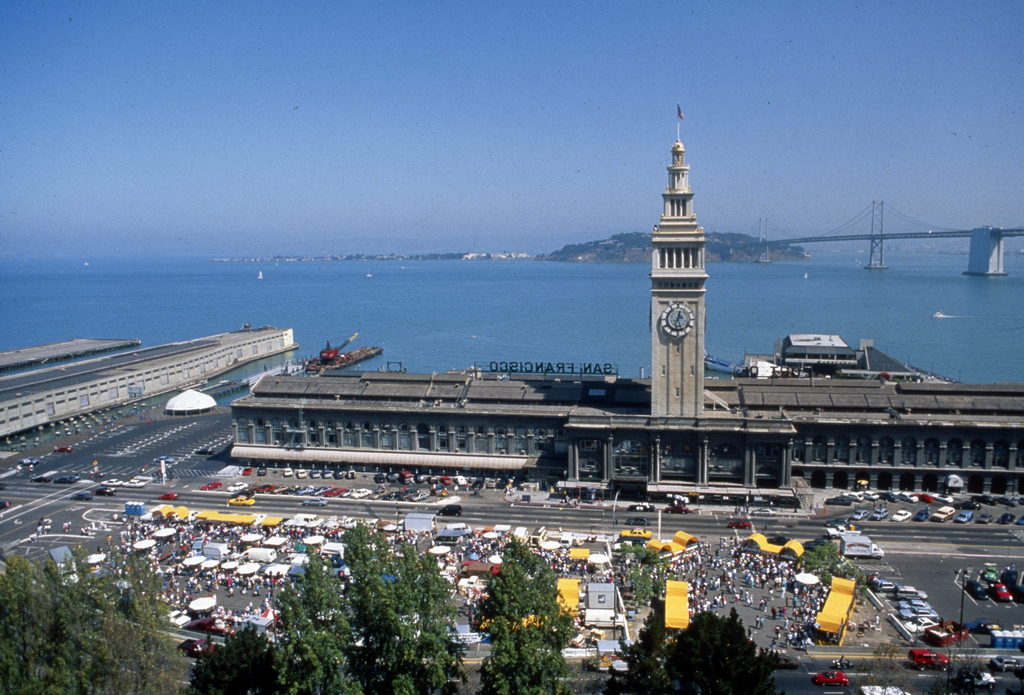
In 1992, a small group of San Franciscans including Sibella Kraus, then a forager and produce-finder for Alice Waters at Chez Panisse, writer, restaurant critic and Hayes Street Grill chef/owner Patricia Unterman, and local developer Tom Sargeant organized themselves into the San Francisco Public Market Collaborative, with the idea of reclaiming the waterfront for a public market that would connect farmers directly with chefs and home cooks--in fact, with any curious city eaters. After endless meetings with representatives from the City and the Port, they got grudging approval for a one-time-only open-air market in Ferry Plaza parking lot on Sept. 12, 1992. At the time, the Alemany Market, located near the freeways at the base of Bernal Heights, was the city's only regular farmers' market. If you were a chef, you relied on distributors and vendors from the wholesale produce market near Bayview. If you needed speciality items, you could swing through Chinatown, the Richmond, or the Mission, if you had time, but mostly, you talked to your delivery guys on the phone, and hoped they'd show up with something close to what you'd asked for.
The success of the one-day market took even the optimists of the collaborative by surprise. The group immediately began pressuring the city to give permission for a regular market, bringing farmers and urbanites together on a weekly basis. By 1993, there was already a few months of precedent: the Heart of the City Farmers' Market had set up in Civic Center in early spring. Starting in May, the market slowly gained momentum, and word spread between interested cooks and farmers alike. Here was the place to come to get stuff fresh, straight from the ground. Farmers were learning, too, that these new customers were curious. They didn't just want as many bunches for a dollar as they could get; they wanted to sniff and taste and know what it was they were seeing. By the time the summer was over, the farmers didn't want to leave. They'd found a new outlet for their produce, one that required a lot of more hands-on time, but also could command a better price that wholesaling. And there were relationships forming, between up-at-3-am farmers from Watsonville and Guinda and city customers who were entranced at the idea of farm-fresh corn and just-picked melons showing up just down the hills from their Telegraph Hill doorsteps once a week. After yet more negotiating with the city, and the market became a year-round event.
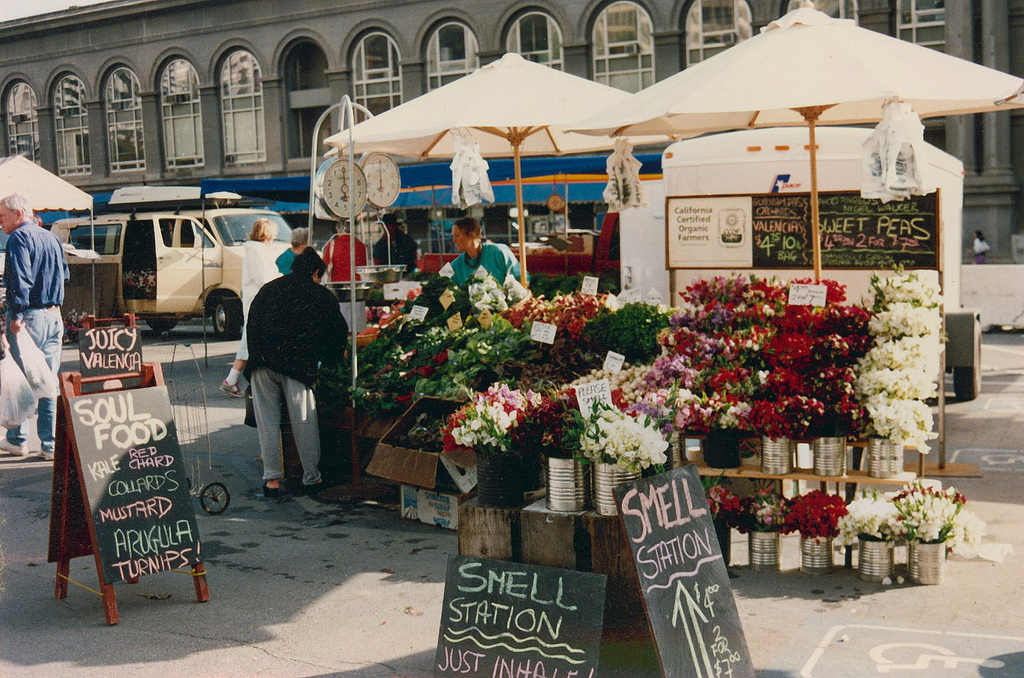
And from the beginning, the chefs came, too. In those first years, as I was learning my way around the city's food scene as the weekly restaurant critic for the San Francisco Bay Guardian, every trip to the market was punctuated by running into a half-dozen other food writers, editors, cookbook authors, and chefs. It was a pretty small world, and for a few hours every Saturday morning, it really was a village. (Look, there's Alice, sniffing the peaches!) The original core group of founders had reorganized into CUESA, the Center for Urban Education about Sustainable Agriculture--none of which were the food-world buzzwords that they are today. From the beginning, the market's organizers had a larger vision: to educate minds as well as palates, and to change the way people, both home cooks and chefs, thought about the process of getting food to their tables. Meeting farmers every week, hearing how the weather or gas prices or labor issues were affecting their crops, seeing how their produce was shaped not season by season but week by week, was a living education for everyone shopping at the market. And farmers learned, too: about what they could sell, what flew off the table and what, like puntarelle, minaret-shaped romesco broccoli, padron peppers, or fuzzy-sheathed green almonds, needed a little more nudging to get piled into the chefs' carts and make it onto menus across the city.

As the renovations of the waterfront and the Ferry Building got underway, the market moved to accommodate the construction, from various parking lots around the building, then north to another parking lot off Green Street near the Embarcadero. It remained for several years, then moved back, now to wrap around the Ferry Building, filling the back parking lot and wrapping around the building. I can still remember one blustery December 31, a vendor calling out, "Free rutabaga with every purchase!" and the delicious rutabaga-potato mash I made on New Year's Day. Or the blissfully sunny February days, the market stalls glowing with sunshine-colored citrus, everyone outside eating oysters, when I'd come back to visit from self-imposed exile in gray, slushy, freezing New York City and wonder why I'd ever left. (Three years away from San Francisco was all I could stand.)
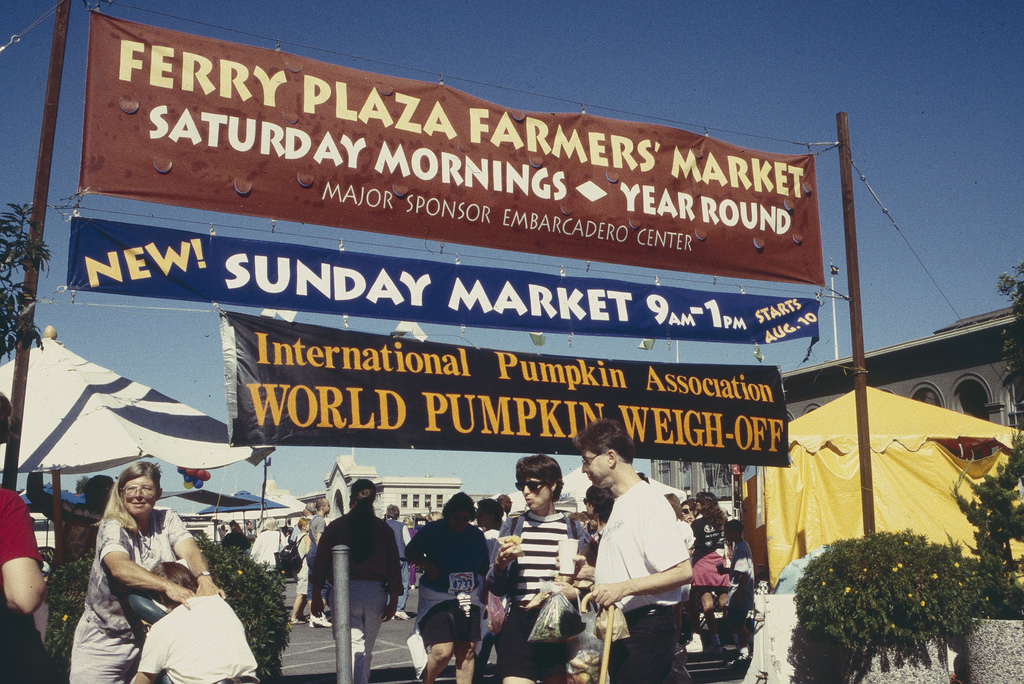
There was a brief, unsuccessful attempt at a Sunday morning market; much more popular were the two lunchtime markets for downtown workers and weekday visitors on Tuesdays and Thursdays. Innovations at the market--from the Waste Wise initiative, which brought large-scale composting and recycling to the market, to the ban on plastic shopping bags, later adopted by the city as a whole, has made a small but significant change for the better in the way we shop and eat. Hundreds of schoolchildren come through the market every year, learning where their food comes from, and how it gets from dirt to plate.
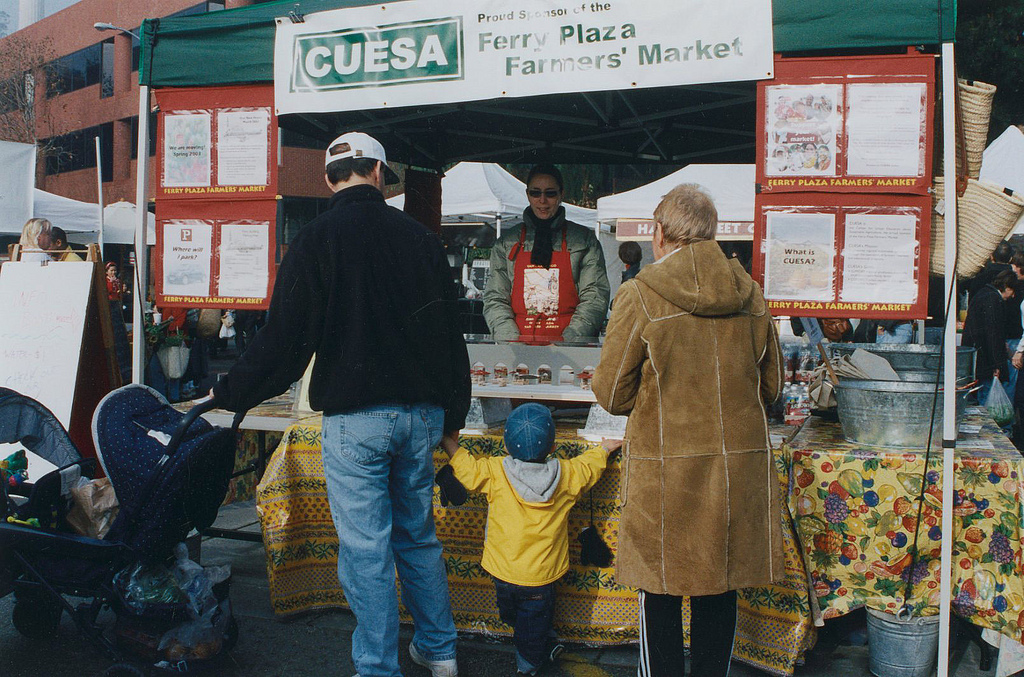
Every day, says executive director David Stockdale, he talks with people from all over the world who are interested in learning from the market. Many of the vendors with brick-and-mortar shops inside the Ferry Building--Michael Recchiuti, Frog Hollow Farm, Prather Ranch, and soon Rancho Gordo and Humphrey Slocombe--started out as vendors in one of the three weekly markets. It's become not just a market but an educational tool, a visitors' destination, a fun place to go for breakfast or lunch, and a showcase for some of Northern and Central California's best produce, week in and week out. Happy birthday, CUESA, and thank you for all you've done.